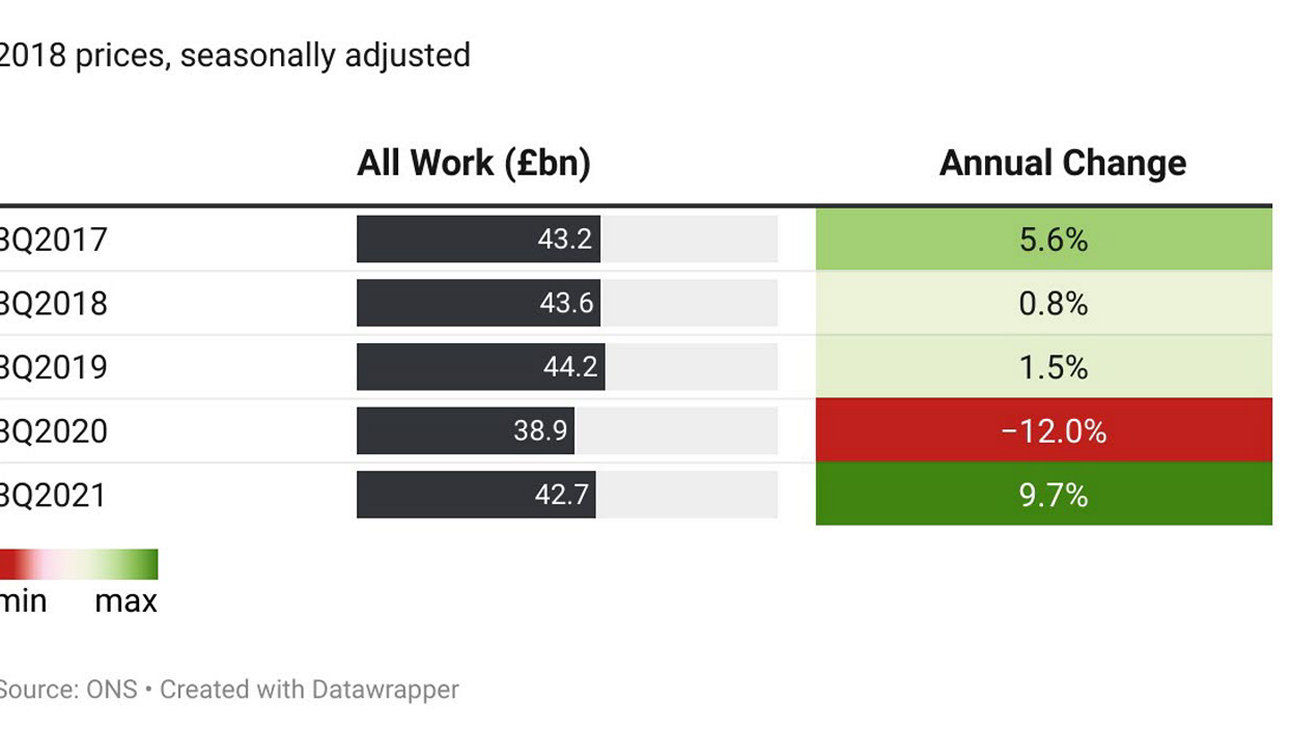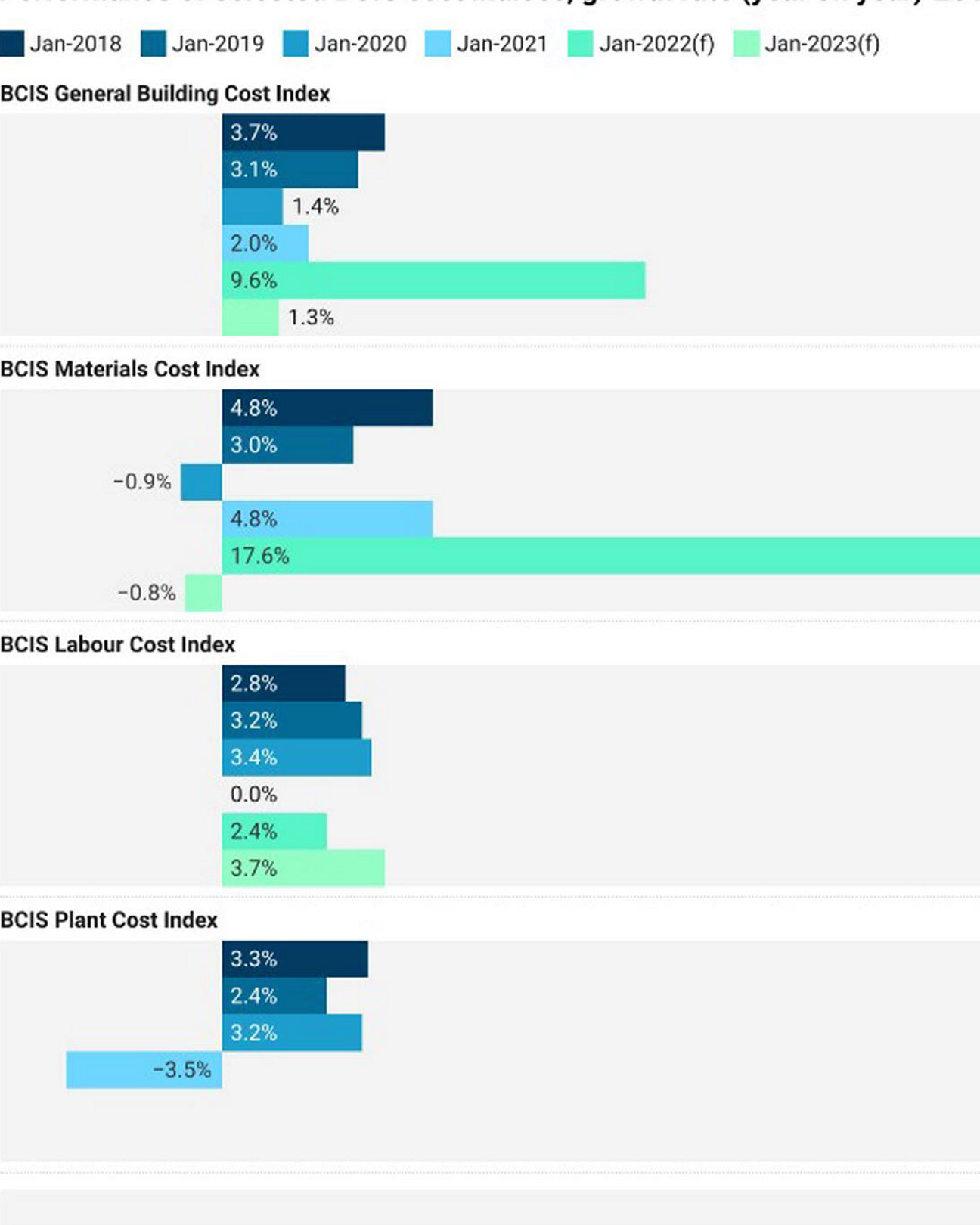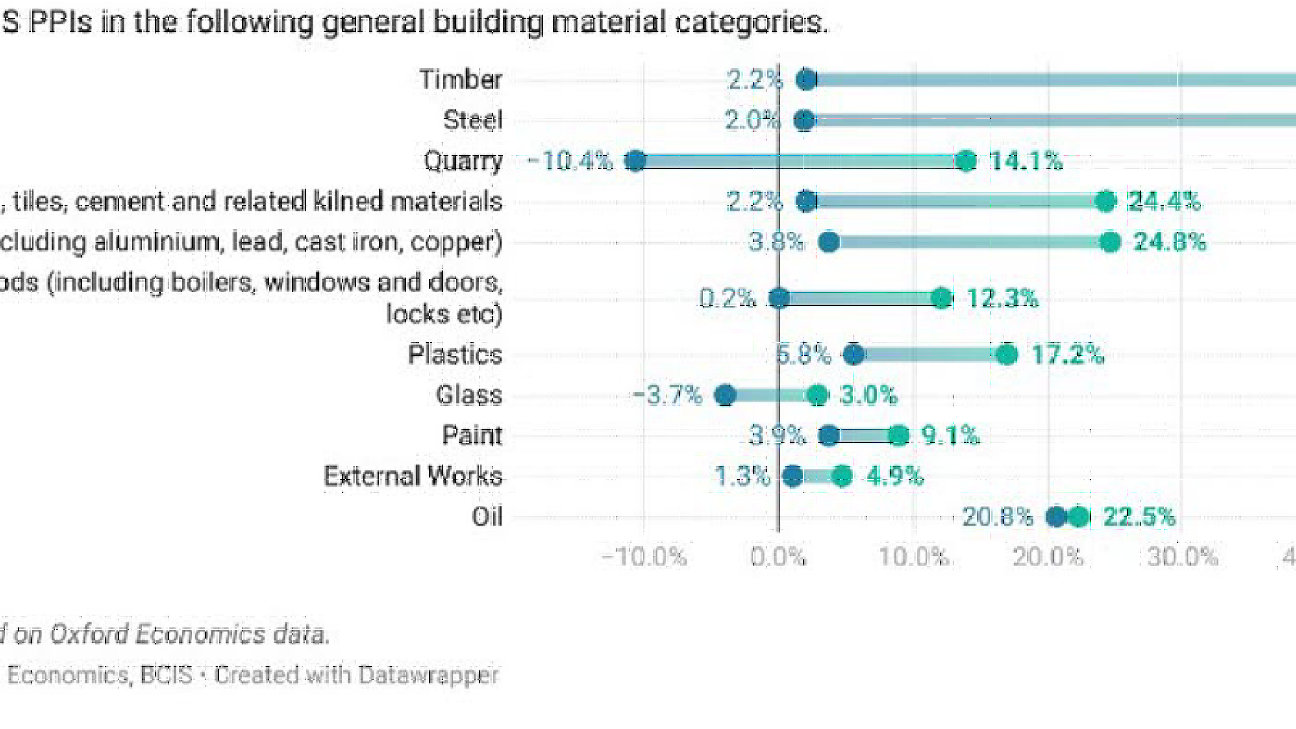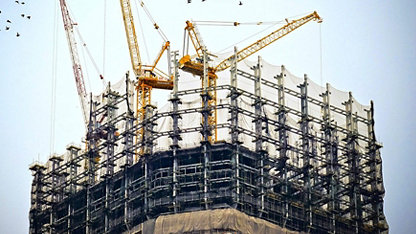Construction materials costs in the UK continue to escalate, reaching a 40 year high based on the annual growth of the BCIS Materials Cost Index.
Increased global demand in the construction sector, combined with the multiple and complex impacts of the pandemic and logistic issues, have resulted in unprecedented shortages, delays and ultimately, increased prices of materials and labour across the economy.
Within the UK, complications resulting from Brexit have exacerbated this situation, affecting all aspects of trade and labour availability. The repercussions are acutely impacting the UK construction sector.
Construction productivity has largely recovered from the initial shock brought by the pandemic and in some instances significant efficiencies have been achieved as a result of new working practices. However, over the summer, June in particular, a drop in productivity was reported due to sub-contractors self-isolating when contacted by the Test and Trace system.
Other factors affecting construction demand include significant lifestyle changes triggered by the pandemic, with many people continuing to work from home reassessing their housing needs. A booming domestic housing market, substantially increased demand in repair maintenance and improvement (RM+I) sector, combined with large infrastructure projects such as HS2 have all significantly contributed to recovery in construction demand.
This is evident from the ONS’ construction statistics which shows that following a 12% drop in 2Q2020, construction output (all work) has increased by 9.7% in 2Q2021 compared to the same period last year.
Construction output (all work)

Analysis of the BCIS General Building Cost Index indicates a rise of 10.2% in September compared to the same period one year ago. The BCIS Materials Cost Index represents the largest contribution to this increase, with the overall cost of materials in the index rising approximately 19.7% during this period.

Note: Data for January 2022 and 2023 is forecast, BCIS Plant Cost Index is not forecast. BCIS Materials Cost index is based on the materials component of the Price Adjustment Formulae Indices using factory gate prices. BCIS Labour Cost Index is based on promulgated nationally agreed wage awards (not site rates)
Within the BCIS Materials Cost Index, between January and September 2021 the greatest increases can be seen in the steel and timber categories, with a high degree of volatility in nearly all materials categories. The ranges of increases within selected materials category contributing to the index are presented below:
Provisional Price Adjustment Formulae Indices for Timber, Steel Sections and Steel for Reinforcement showed annual increases of 79.4%, 60.4%and 80.0% respectively in September. The decision of British Steel to add a temporary £30 per tonne surcharge on the cost of structural steel, due to a rising energy cost, will continue to escalate costs for steel.
With increasing reliance on imports to fulfil domestic timber demand and some timber-producing countries implementing log export bans, timber supply remains under pressure throughout the UK. In November, BEIS Monthly Statistics of Building Materials and Components reported two of the top three construction materials with the greatest price change in the twelve months to September 2021 were imported sawn or planed wood (+73.3%) and particle board (+65.4%).
Brick deliveries across the UK are reportedly subject to extensive delays, with major manufacturers warning of significant price rises for pre-order due to extreme market volatility. Since February 2021, IHS/Markit CIPS UK Construction PMI has reported increased prices and supply shortages of bricks. Adding to this, HGV shortages and the sharp rises in wholesale energy prices means the situation for brick, block and ceramics is unlikely to improve in the near term with serious repercussions to productivity and critical path, particularly in the residential sector.
Analysing the impact of materials’ price increases James Fiske, Director of BCIS, commented: “The cost of materials in constructing a 3-bedroom semi-detached house has increased by 14% or approximately £7,300 between January and September 2021. It is expected to grow by further 1% or £600 by the end of this year.”
Joe Martin, BCIS Lead Consultant added: “The pressure on materials prices and availability is expected to continue at least until the end of 2022. Labour shortages are expected to evolve as the significant driver for overall construction cost increases next year and the construction sector would need to compete for it with other sectors”.
BCIS Review of House Building Trends, average area of 3-bedroom semi-detached house 88.52m2
Calculated by applying forecast of the BCIS Material Price Index













